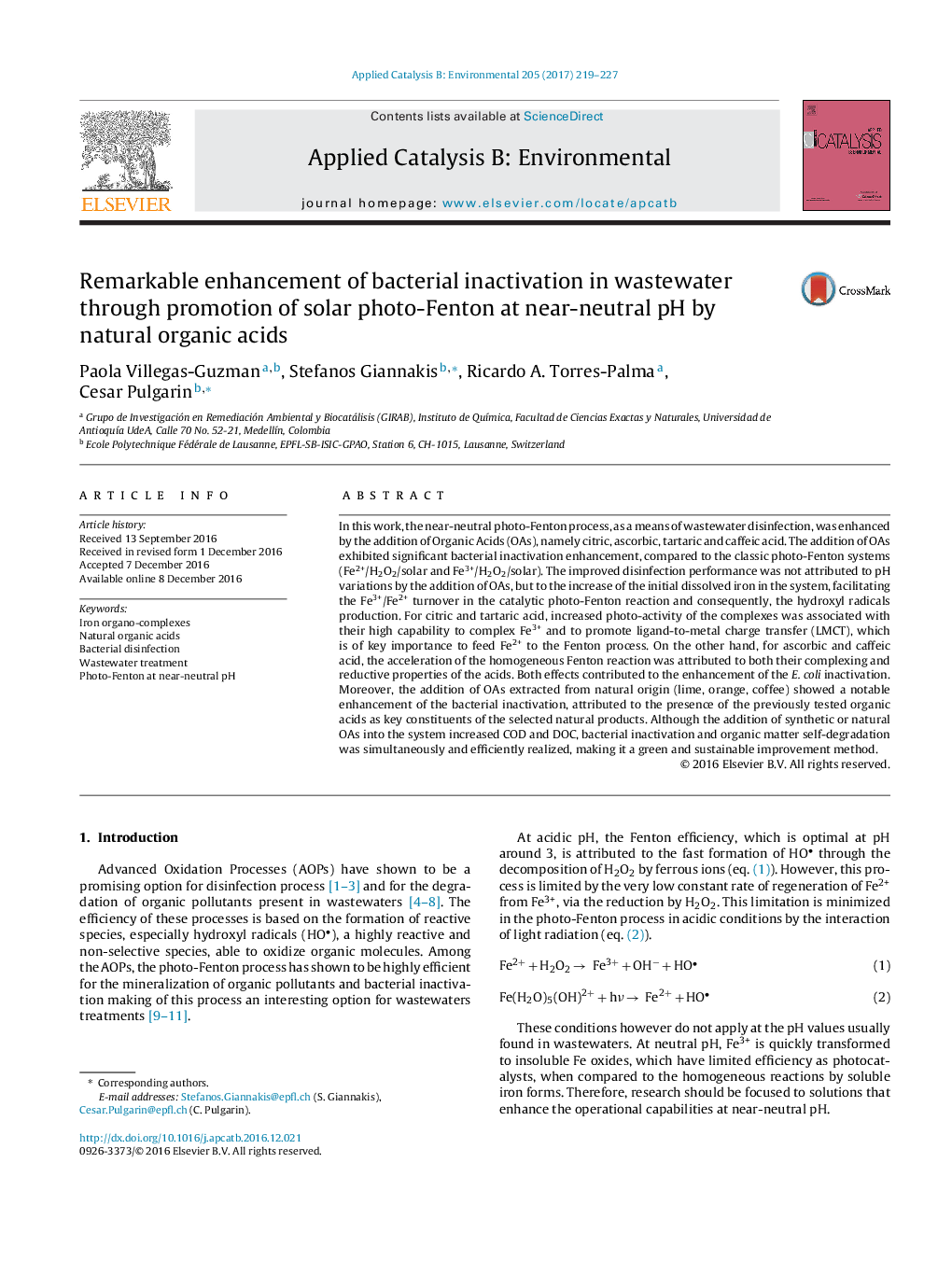| Article ID | Journal | Published Year | Pages | File Type |
|---|---|---|---|---|
| 6454313 | Applied Catalysis B: Environmental | 2017 | 9 Pages |
â¢The addition of natural products improved the solar photo-Fenton disinfection process.â¢Bacterial inactivation in WW was achieved despite the presence of added organic matter.â¢The performance of CA and TA is attributed to the photo-activity of the Fe-CA/TA complexes.â¢AA induces a direct reduction of Fe3+ and enhances the Fenton reaction.â¢Photo-activity and direct reduction were involved in the CfA-induced effects.
In this work, the near-neutral photo-Fenton process, as a means of wastewater disinfection, was enhanced by the addition of Organic Acids (OAs), namely citric, ascorbic, tartaric and caffeic acid. The addition of OAs exhibited significant bacterial inactivation enhancement, compared to the classic photo-Fenton systems (Fe2+/H2O2/solar and Fe3+/H2O2/solar). The improved disinfection performance was not attributed to pH variations by the addition of OAs, but to the increase of the initial dissolved iron in the system, facilitating the Fe3+/Fe2+ turnover in the catalytic photo-Fenton reaction and consequently, the hydroxyl radicals production. For citric and tartaric acid, increased photo-activity of the complexes was associated with their high capability to complex Fe3+ and to promote ligand-to-metal charge transfer (LMCT), which is of key importance to feed Fe2+ to the Fenton process. On the other hand, for ascorbic and caffeic acid, the acceleration of the homogeneous Fenton reaction was attributed to both their complexing and reductive properties of the acids. Both effects contributed to the enhancement of the E. coli inactivation. Moreover, the addition of OAs extracted from natural origin (lime, orange, coffee) showed a notable enhancement of the bacterial inactivation, attributed to the presence of the previously tested organic acids as key constituents of the selected natural products. Although the addition of synthetic or natural OAs into the system increased COD and DOC, bacterial inactivation and organic matter self-degradation was simultaneously and efficiently realized, making it a green and sustainable improvement method.
Graphical abstractDownload high-res image (188KB)Download full-size image
